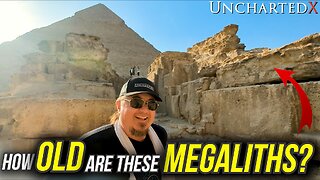For Whom The Bell Tolls Metallica
In honor of the Eclipse I give you
For Whom The Bell Tolls Album: Ride The Lightning (1984)
by Metallica
The rules change April 8th. 04/08 2024
Forty-eight is the double factorial of 6
The number of symmetries of a cube.
The number of Ptolemaic constellations.
According to the Mishnah, Torah wisdom is acquired via 48 ways (Pirkei Avoth 6:6).
In Buddhism, Amitabha Buddha had made 48 great vows and promises to provide ultimate salvation to countless beings through countless eons, with benefits said to be available merely by thinking about his name with Nianfo practice. He is thus hailed as "King of Buddhas" through such skillful compassion and became a popular and formal refuge figure in Pureland Buddhism.
On Tool's album Ænima, there is a song named "Forty-Six & 2", the sum of which is 48.
48 Hours is a television news program on CBS.
'48 is an alternate history novel by James Herbert.
The number 48 in ASCII is what you add to any single digit integer to convert to its ASCII value.
In my world, a 48 is an Incomplete Sequence Relay / Blocked Rotor
The lyrics are based on the 1940 Ernest Hemingway novel of the same name. The book is about an American who is given the job of taking out a bridge held by the Fascist army in the Spanish Civil War - the precursor to World War II. He fell in love and then found out very disturbing things about life and death.
The phrase "For Whom The Bell Tolls" originated in a 1623 poem by the Englishman John Donne, who wrote:
Send not to know
For whom the bell tolls
It tolls for thee
Hemingway's book used the title.
This song is a commentary on the futility of war. The last few lines of the song diverge from the book to make this point. >>
This is another song in which Cliff Burton's unique lead bass style is often mistaken for a guitar solo. Burton played the intro using light distortion on his bass.
According to Kirk Hammett, Burton regularly played the intro bass riff when the pair of them were hanging out in their hotel room. The guitarist recalled to Rolling Stone in 2014: "He used to carry around an acoustic classical guitar that he detuned so that he could bend the strings. Anyway, when he would play that riff, I would think, 'That's such a weird, atonal riff that isn't really heavy at all.'"
"I remember him playing it for James (Hetfield, vocals), and James adding that accent to it and all of a sudden, it changed," Hammett added. "It's such a crazy riff. To this day, I think, 'How did he write that?' Whenever I hear nowadays, it's like, 'OK, Cliff's in the house.'"
Burton, Hetfield and Lars Ulrich are the credited writers on the song.
Ride The Lightning is the second Metallica album, and the first co-produced by Flemming Rasmussen, who worked on their next two albums as well. He came on board when the band decided to record the album in Europe, where studio time cost much less than in America thanks to a favorable exchange rate. They chose Rasmussen's Sweet Silence Studios in Copenhagen and used him as engineer and co-producer (along with the band).
On this song, they tried something new. "'For Whom the Bell Tolls' was the first song we ever did to a click track," Rasmussen said in a Songfacts interview. "That was kind of tricky. That was also Lars learning how to play to a click."
The song opens with the tolling of a bell, which rings throughout the first minute of the song before gradually fading out. It's the second-most famous rock song to do this, placing behind AC/DC's "Hell's Bells," from their 1980 album Back In Black.
The bands got their bell sounds in very different ways; AC/DC ordered a custom, one-ton bell from a foundry and recorded it using a mobile unit and 15 microphones. Metallica used a sound effects reel.
"We edited in the bell effect so it would fit and be in tempo," Flemming Rasmussen told Songfacts. "I copied it and cut it in where it was supposed to come. So, once we got that tape started at the right spot, it simply played itself, and then dumped it into 24-track."
-
 3:06:28
3:06:28
Fresh and Fit
8 hours agoDo Sex Workers Deserve A Good Man?! HEATED DEBATE!
100K121 -
 16:39
16:39
Stephen Gardner
9 hours ago🔴Breaking: Trump GETS HUGE boost as Jesse Waters Humiliates Biden!
36.2K81 -
 39:42
39:42
Candace Owens
14 hours agoChrissy Teigen Needs An Exorcism | Candace Ep 11
54.2K100 -
 2:32:24
2:32:24
Fresh and Fit
14 hours agoHow To Start A Business With NO MONEY!
80.9K13 -
 1:42:10
1:42:10
Glenn Greenwald
13 hours agoU.S./Russia Tensions Escalate Over Ukraine to Most Dangerous Level Yet; CNN’s Kasie Hunt has Humiliating Meltdown; PLUS: Journalists Lee Fang and Jack Poulson on Israeli Influence Campaign on U.S. Campuses | SYSTEM UPDATE #288
103K117 -
 54:28
54:28
UnchartedX
15 hours agoHow Old Are These MEGALITHS? A Study of Erosion in Ancient Egyptian Architecture - UnchartedX
65.7K27 -
 3:38:31
3:38:31
PudgeTV
18 hours ago🔵 Mod Mondays Ep 30 | SilverFoxGamr - How to Get HUGE! | Elden Ring Pre-Show & DLC
59.7K3 -
 1:05:10
1:05:10
Donald Trump Jr.
18 hours agoThe American Dream is on the Ballot, Interview with Sean Davis | TRIGGERED Ep.148
155K152 -
 2:02:31
2:02:31
Revenge of the Cis
15 hours agoEpisode 1342: You Fell For It
130K29 -
 58:12
58:12
Savanah Hernandez
14 hours agoPropaganda goes into overdrive ahead of Thursday’s Presidential debate
92.1K75